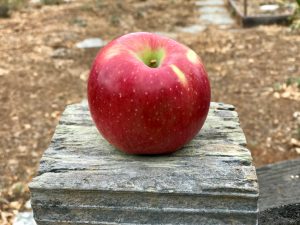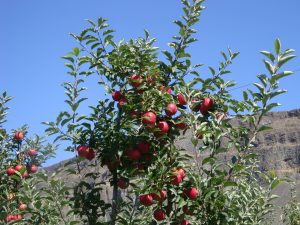What are you really getting from organic apples? Safe working conditions for farmers and farmworkers!
 The AgDaily OpEd entitled "What are you really getting from organic apples", written by Michelle Miller, is extremely misleading and mischaracterizes pesticide use on organic and conventional farms. She conflates brand name products with generic chemicals, and shows a basic lack of understanding of organic farming practices.
The AgDaily OpEd entitled "What are you really getting from organic apples", written by Michelle Miller, is extremely misleading and mischaracterizes pesticide use on organic and conventional farms. She conflates brand name products with generic chemicals, and shows a basic lack of understanding of organic farming practices.
Organic farmers are regulated by the USDA and must follow strict standards set forth by the National Organic Program regulations. To control pests and weeds on their farm they have to first use preventative management techniques, such as crop rotations, intercropping, the use of buffers and hedgerows, and the promotion of soil health. Because organic farms support beneficial insects such as ladybugs and spiders they can use the balanced farm ecosystems to prevent crop damage, rather than only relying on synthetic chemicals as their go-to line of first defense, or even pre-emptive sprays that are used on many conventional farms.
As a last resort, if the preventative measures taken by organic farmers are not sufficient, organic farmers are permitted to use natural (non-synthetic) substances, with some exceptions, and a limited number of synthetic substances approved by the National Organic Program. The few synthetic substances that are allowed in organic products are subject to a rigorous technical review and must be determined to not be harmful to the environment or human health and must be necessary for production because of the absence of natural alternatives, and are re-reviewed every five years to ensure continued safety.
Organic agriculture is dynamic, and organic farmers and researchers are always working on ways to reduce pesticide use beyond the limited scope of what’s allowed in organic. Organic stakeholders proactively seek to use the most recent science and technology to improve the quality of food and organic production. These advances aren’t limited to organic – they can also be adopted by conventional farmers to advance safety and sustainability in all of agriculture.
 Organic Gala apples ready for harvest near Wenatchee
Organic Gala apples ready for harvest near Wenatchee
Photo Credit: David Granatstein
In Miller’s article, she claims that “there are 5,500 different chemical substances and pesticides for use in organic farming,” and links to the OMRI Product List website, but she is confusing brand names with individual chemical substances. A single substance, such as rosemary essential oil, could have dozens or even hundreds of brand names, depending on how the substance is further formulated and marketed. The OMRI Products List is a compilation of brand name products that are formulated only with substances that are compliant with the NOP regulations for use in organic production and processing. Instead of comparing numbers of brand-name products, she should look at the specific synthetic active ingredients allowed for use in conventional versus organic farming: While there are approximately 900 synthetic chemical substances approved for use as pesticides in conventional farming, the National Organic Program only allows around 25 synthetic substances, and those must be proven to pose little risk to human health or the environment.
As a farmer herself, I am surprised that Miller doesn’t support organic as a tool to reduce the use of pesticides and support farmer and farmworker health. Research clearly shows that the conventional use of pesticides can have a negative impact on farmer health, and that organic implements pest management practices that can be adopted by any farming system to reduce the need for pesticides. The Organic Center recently published a report detailing the dangerous consequences of occupational exposure to conventional pesticides, and how organic strategies can protect farmers from dangerous pesticide exposure. Read the full report here, and then make your own conclusions!


